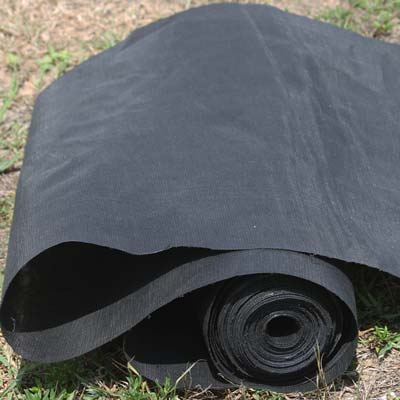A geotextile is a synthetic fabric used in civil engineering and construction projects for soil stabilization, erosion control, drainage, and more. These fabrics are specially designed to improve the long-term performance and durability of various projects. Whether in road construction, landscaping, or environmental protection, geotextiles are essential for ensuring stability, strength, and filtration. In this article, we will explore two main types of geotextiles: Woven Geotextile and Non-Woven Geotextile, while discussing their uses and benefits.
I.What is Geotextile?
Geotextiles are permeable fabrics made from synthetic materials like polypropylene or polyester. They are placed between layers of soil, rock, or other materials to improve the structure’s stability and durability. Geotextiles serve various functions, including separation, reinforcement, filtration, drainage, and protection. Their widespread use in construction projects helps manage issues like soil erosion, water drainage, and soil stabilization.
Two common types of geotextiles are Woven Geotextile and Non-Woven Geotextile, each offering unique advantages depending on the project’s requirements.
II.Woven Geotextile: Strength and Stabilization
Woven geotextiles are manufactured by weaving threads together in a crisscross pattern, creating a fabric with a high tensile strength. This makes them an ideal choice for projects that require soil stabilization and support under heavy loads. For example, in road construction, woven geotextiles are used as a sub-base layer to reinforce the roadbed, ensuring that it does not sink or shift over time.
In addition to road building, woven geotextiles are commonly used in retaining walls, embankments, and other load-bearing structures where strong reinforcement is needed. Their tight weave structure helps prevent soil movement, offering long-term durability and protection. Moreover, they perform well in environments where high tensile strength is necessary, making them suitable for projects dealing with weak or loose soils.

III.Non-Woven Geotextile: Flexibility and Filtration
On the other hand, non-woven geotextiles are created by bonding synthetic fibers together using heat or chemicals, forming a more flexible and felt-like fabric. This type of geotextile is ideal for filtration and drainage applications. Its porous structure allows water to pass through while filtering out soil and other particles, which is why non-woven geotextiles are frequently used in drainage systems like French drains and trench drains.
These geotextiles are also essential for erosion control. In areas prone to heavy rainfall or flooding, non-woven geotextiles can help protect against soil erosion by holding soil particles in place while allowing water to flow through. Additionally, they are used in applications like landfill liners, where they serve as a protective layer, preventing punctures in other barrier materials.
Although non-woven geotextiles do not provide as much strength as woven ones, they excel in drainage and filtration applications. Their flexibility makes them easier to install, and they perform well in managing water flow and preventing clogging.

IV.Key Applications of Geotextiles
Geotextiles are used in various industries and projects, thanks to their adaptability and multifunctionality. Here are some of the most common applications:
Road Construction:
Woven geotextiles are commonly used for soil stabilization, especially in roads and highways, where they reinforce the subgrade and distribute load evenly to prevent surface cracks and damage.
Drainage Systems:
Non-woven geotextiles are essential in drainage projects to separate soil from water flow. They prevent soil from clogging drainage pipes, allowing efficient water movement while keeping soil particles at bay.
Erosion Control:
Both woven and non-woven geotextiles are used to control erosion in landscapes, riverbanks, and coastal areas. By holding soil in place, they protect these areas from heavy rain or water flow that could otherwise cause soil displacement.
Environmental Protection:
In landfills and waste containment systems, non-woven geotextiles are often used to protect the liner materials that keep contaminants from seeping into the soil or water. This ensures the long-term safety and integrity of the landfill.
Retaining Walls and Embankments:
Woven geotextiles provide the necessary strength to stabilize structures like retaining walls, embankments, and steep slopes by reinforcing the soil and preventing erosion or movement.
V.Choosing the Right Geotextile
Selecting the right type of geotextile depends on the project’s specific requirements. If you need soil stabilization or reinforcement, especially in roadways or heavy-duty construction, woven geotextiles are typically the best choice due to their strength and durability. On the other hand, if your project involves water drainage, filtration, or erosion control, non-woven geotextiles are more suitable due to their flexibility and ability to allow water to pass through.
In some projects, a combination of both types of geotextiles may be necessary. For instance, woven geotextiles might be used for reinforcement, while non-woven geotextiles provide filtration and drainage capabilities.
VI.Conclusion
Geotextiles play a vital role in modern construction and environmental protection. Whether you need to stabilize weak soil, control erosion, or manage drainage systems, these materials offer versatile and reliable solutions. Understanding the differences between woven geotextile and non-woven geotextile can help you make an informed decision, ensuring your project benefits from the right material. By selecting the appropriate geotextile, you can enhance the longevity, stability, and overall performance of your construction or environmental project.